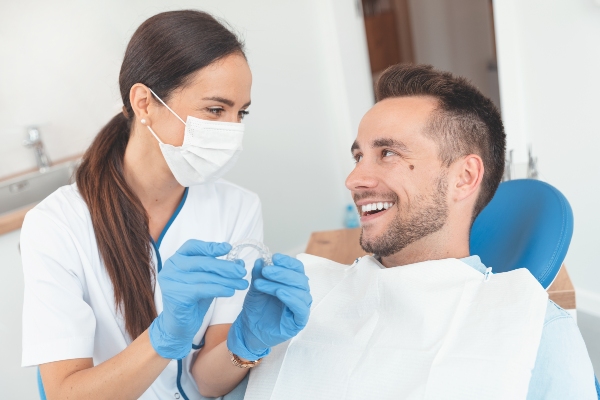 If you are considering Invisalign® treatment for teeth straightening, you will likely want details about the process. Read on to learn about what happens during and after Invisalign treatment. When you visit the orthodontist for a consultation, they will explain the specifics of what to anticipate during and after treatment. They will also discuss using a retainer following treatment.
If you are considering Invisalign® treatment for teeth straightening, you will likely want details about the process. Read on to learn about what happens during and after Invisalign treatment. When you visit the orthodontist for a consultation, they will explain the specifics of what to anticipate during and after treatment. They will also discuss using a retainer following treatment.
What happens after Invisalign treatment is complete
Invisalign treatment usually takes one to three years to restore the teeth to their correct position and alignment. Patients must wear clear aligners for about 20 to 22 hours per day. Although the aligners will reposition the teeth correctly, there is a chance that the teeth may attempt to return to their original position. Wearing a retainer after treatment helps to prevent this.
The retainer maintains the final position of the teeth. The amount of time the patient must wear the retainer is determined by how far their teeth shift throughout Invisalign treatment. The orthodontist may recommend 24-hour use of the retainers for a year. The retainer, like the aligners, can be removed when eating or brushing the teeth.
Most patients eventually only need to use the retainer overnight after the first year. Some people may need to keep wearing their retainer every night for the rest of their lives. For instance, patients with a case of tongue thrust will need to keep wearing the retainer to stop the teeth from moving forward during sleep.
Patients can choose between two retainer options: a transparent plastic retainer and a retainer made of plastic and metal.
Clear plastic retainers
These retainers cover the teeth just like aligners do and are almost identical to them. There are instances where patients may use their last aligner as a retainer for a short period. The retainer works in the same manner as the aligner in that it keeps the teeth in place. This retainer differs in that it keeps teeth in their permanent place. It is not necessary to change it out like the aligners. As a result, it is critical to take excellent care of it and protect it from being destroyed or lost.
Metal and plastic retainers
Plastic and metal retainers are placed on the roof of the mouth. After that, they attach a wire to the plastic piece in front of the teeth. The teeth are positioned between the metal wire and the plastic component. The advantage of this kind of retainer is that the metal may be modified as needed. As a result, if an adjustment is required, the orthodontist can do it without replacing anything. These retainers are also often less expensive, making them a more appealing choice for certain patients.
In conclusion
No matter what kind of retainer a patient has, they must be handled with care. It is a good idea to keep them in a plastic case while not in use and rinse and wash them regularly. The teeth should stay in place following Invisalign treatment if they are worn as recommended. Speak with our orthodontist to learn more about what occurs after teeth straightening.
Request an appointment or call Citrus Grove Orthodontics at 714-464-5933 for an appointment in our Orange office.
Related Posts
Invisalign® is a modern teeth-straightening option that serves as an alternative to metal braces. Invisalign eliminates the need for brackets and wires; instead, it uses a series of clear plastic aligners to realign the teeth. Although lots of individuals are aware of the aesthetic advantages of Invisalign, like a straighter smile, there are also health…
Are you considering Invisalign® treatment? Read on to learn about some of the benefits of opting for this teeth-straightening treatment. According to the American Dental Association, teeth straightening is more than just for cosmetic purposes; it may help your overall oral health. While conventional metal braces are still widely used, modern technology has enabled the…
If you have had braces in the past, you may want to try Invisalign® to correct any crooked teeth that shifted back. Read on to learn more. Fortunately, you can receive Invisalign aligners despite having already had braces. Interestingly, those who have to undergo teeth straightening for a second time usually go for Invisalign instead…
